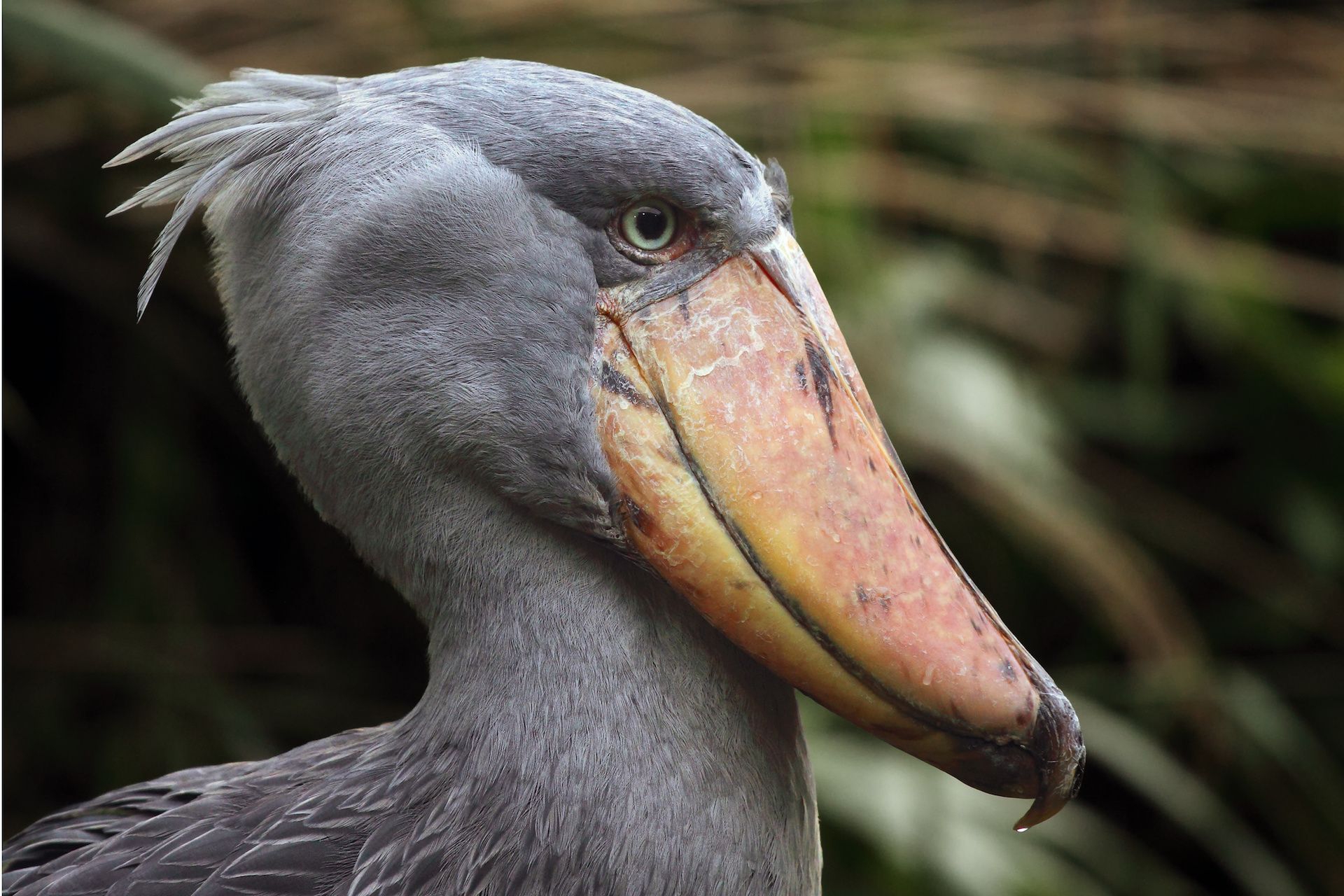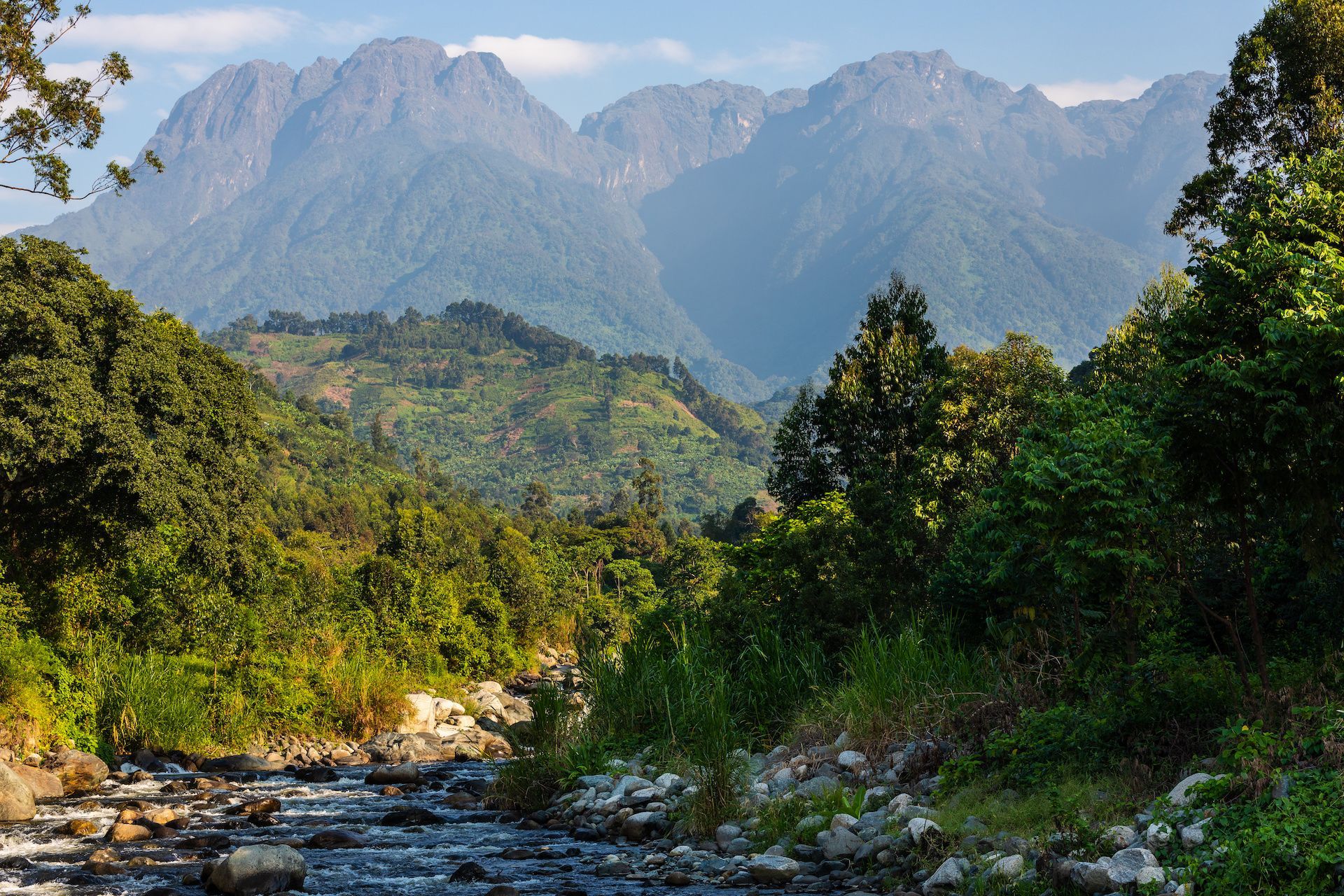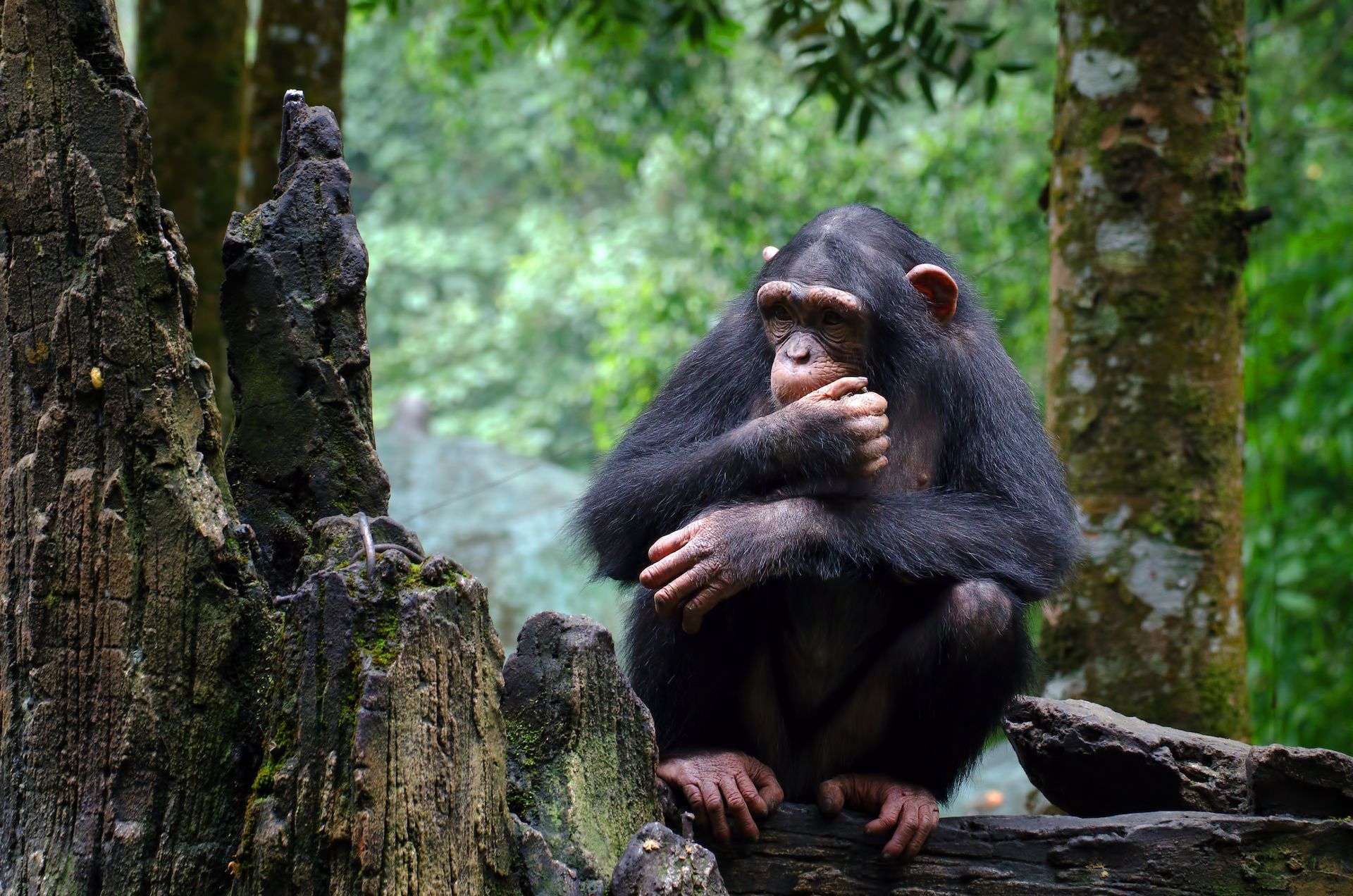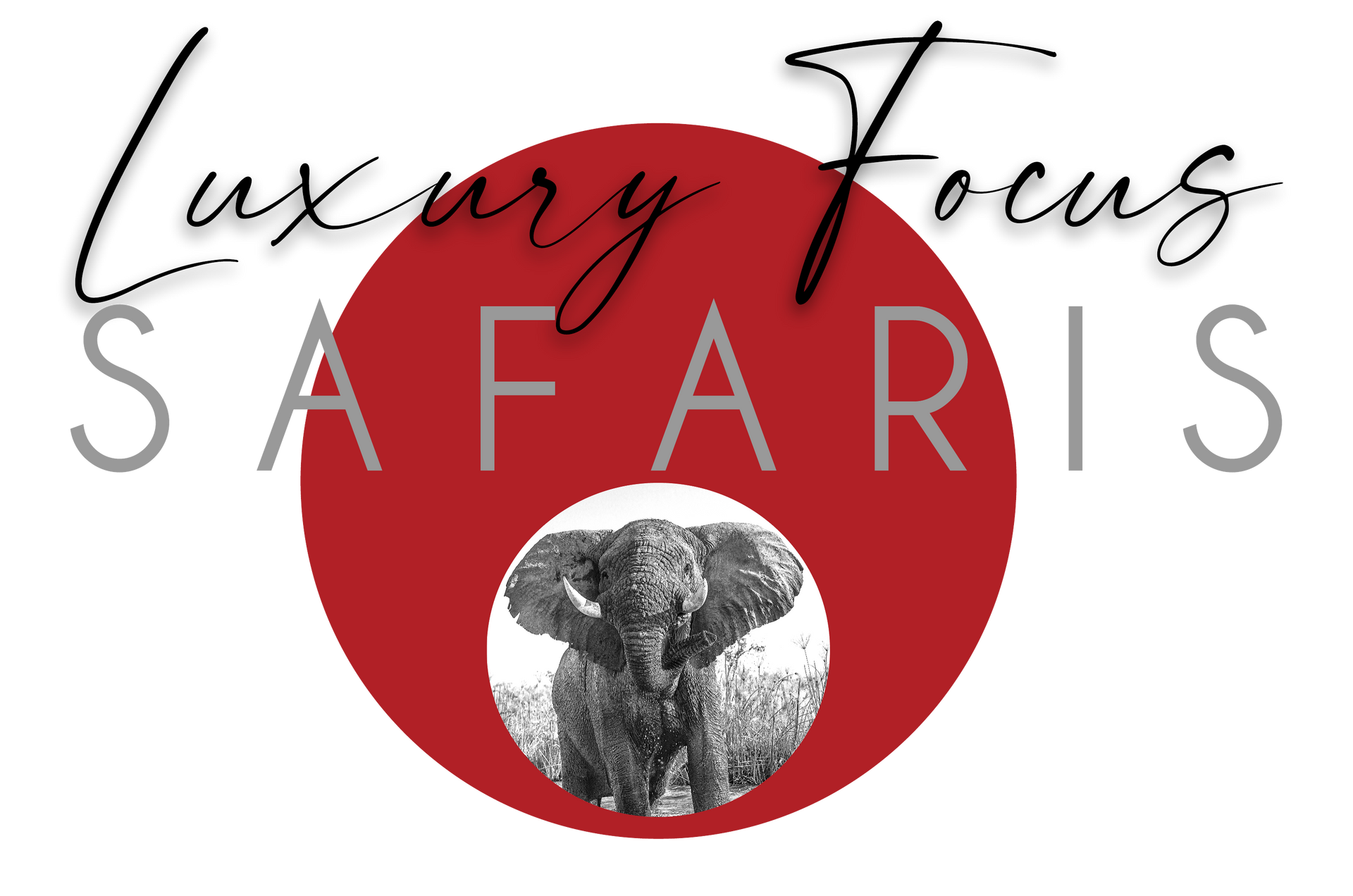Uganda
Uganda
Uganda

Slide title
Write your caption hereButton
Slide title
Write your caption hereButton
Slide title
Write your caption hereButton
The Pearl
OF AFRICA
Like its East African safari neighbours, Uganda is home to the Big Five, but its our closest cousins that have put the nation on the international tourism map... The mountain gorillas of Bwindi Impenetrable Forest and the chimpanzees of Kibale National Park are this country's greatest assets and top wildlife bucket lists.
Uganda is also home to the source of the Nile, at Jinja on the shores of Lake Victoria. This mighty river is forced through a narrow 21 feet-wide gorge on its way to Lake Albert, forming the breathtaking Murchison Falls. The river is every inch the tourism drawcard that Uganda's great apes are, and visitors can enjoy a variety of activities along the Nile, from white water rafting to just sitting and taking in the majesty of this iconic river in its early stages.
A land of contrasts, Uganda's Rwenzori Mountains are simply breathtaking, forming a natural border between the country and neighbouring Rwanda and the Democratic Republic of Congo. These are the legendary "Mountains of the Moon" with their peaks forming a dramatic backcloth to some of Uganda's most beautiful landscapes.
It's on these mountain slopes that coffee is grown - the country's number one export!
Birders also love Uganda, thanks to the more than 1000 species recorded across the country's various habitats. Endemic species include the purple-breasted sunbird and dwarf honeyguide, as well as the incredible shoebill, which can be found in Queen Elizabeth National Park, as well as a variety of other destinations.

Slide title
Write your caption hereButton
Slide title
Write your caption hereButton
Slide title
Write your caption hereButton
The Pearl
OF AFRICA
Like its East African safari neighbours, Uganda is home to the Big Five, but its our closest cousins that have put the nation on the international tourism map... The mountain gorillas of Bwindi Impenetrable Forest and the chimpanzees of Kibale National Park are this country's greatest assets and top wildlife bucket lists.
Uganda is also home to the source of the Nile, at Jinja on the shores of Lake Victoria. This mighty river is forced through a narrow 21 feet-wide gorge on its way to Lake Albert, forming the breathtaking Murchison Falls. The river is every inch the tourism drawcard that Uganda's great apes are, and visitors can enjoy a variety of activities along the Nile, from white water rafting to just sitting and taking in the majesty of this iconic river in its early stages.
A land of contrasts, Uganda's Rwenzori Mountains are simply breathtaking, forming a natural border between the country and neighbouring Rwanda and the Democratic Republic of Congo. These are the legendary "Mountains of the Moon" with their peaks forming a dramatic backcloth to some of Uganda's most beautiful landscapes.
It's on these mountain slopes that coffee is grown - the country's number one export!
Birders also love Uganda, thanks to the more than 1000 species recorded across the country's various habitats. Endemic species include the purple-breasted sunbird and dwarf honeyguide, as well as the incredible shoebill, which can be found in Queen Elizabeth National Park, as well as a variety of other destinations.
UGANDA'S HOTSPOTS

Bwindi Impenetrable Forest
High in the Virunga Mountains in the south west of the country, Bwindi Impenetrable Forest is home to half of the world's population of mountain gorillas. It's a large, high-altitude primeval forest ranging in altitude between 3800 feet and 8550 feet and sits at the edge of the Great Rift Valley.
Bwindi is one of the most biologically diverse areas on earth. It's home to 120 species of mammal, 346 bird species, 202 butterfly species, 163 tree species, 100 fern species and rare and endemic species of reptiles and amphibians. But it's the gorillas that draw people from all over the world.
Gorilla trekking has become synonymous with Uganda and requires a good deal of fitness as hiking through Bwindi's dense, steeply slooping rainforest and bamboo thickets is not easy. It can be a long and tiring trek before you reach the gorillas, but every step is worth it!
You are accompanied by expert trackers and guides and are allowed to spend an hour with the gorillas before returning to your lodge. We thoroughly recommend it as seeing mountain gorillas in their natural habitat is a truly lifechanging experience.

Queen Elizabeth National Park
At just over 763 square miles in size, Uganda's Queen Elizabeth National Park in western Uganda is famous for its primates, rare and endemic birds like the shoebill and its tree-climbing lions!
This is one of the few places in Africa where you can photograph lions in the high branches of tall riparian trees, where they spend their days in an effort to escape the heat and nagging insects. Lions are not natural tree climbers, so this learned behaviour has made them legendary! You'll find the lions primarily in the Ishasha region of the park, which spans the equator and his home to large populations of buffalo, elephant and plains game.
In between are vast areas of savannah, shade-filled forests, sparkling lakes and lush wetlands, all set against the dramatic backdrop of the the Rwenzori Mountains and their jagged peaks.
Queen Elizabeth National Park is the second largest in Uganda and is also home to good populations of chimpanzee which make their home in the park's rainforests. With more than 600 bird species and unusual mammals like the Ugandan kob, sitatunga, giant forest hog and topi, the park is renowned for its excellent game viewing and stunning scenery.

Kibale National Park
A great addition to any Ugandan safari itinerary, Kibale National Park is the place to go to see wild chimpanzees in their natural habitat and the main drawcard is chimp tracking. Just 200 miles west of the country's capital city of Kampala and measuring 296 square miles, Kibale is also a popular hiking, birding and cultural destination.
With its open savannahs, dense woodland, lush tropical forests and evergreen rainforests, this is one of the last wilderness areas in Uganda to have both montane and lowland forests. It's a biodiverse destination and home to some of the highest concentrations of primates in Africa.
From the red colobus to L'Hoerst's monkey and, of course, the chimpanzees, other mammals found in Kibale include red and blue duikers, the shy sitatunga antelope, buffalo, leopard, serval, African golden cat and two species of otter.
Kibale is linked to Queen Elizabeth National Park via a large wildlife corridor that allows elephants to move freely between the two reserves. It's also home to more than 325 species of bird and the wild, Robusta coffee tree!

The Nile & Murchison Falls
Just one-and-a-half hours from Uganda's capital of Kampala, at Jinja on the shores of Lake Victoria, the longest river in the world begins its 4,130 mile journey to the Mediterranean... This is the source of the Nile, the fabled river of ancient Egypt that has fascinated mankind since history began.
The river here is known as the White Nile, joining with the Blue Nile (which has its source at Lake Tana in Ethiopia) at Khartoum in Sudan before making its way to Egypt. Here in Uganda the Nile is constricted by a 50-mile series of rapids before flowing into Lake Albert, the most famous of which result in the river being forced through a narrow, 21-foot chasm and plunging over 130 feet over Murchison Falls.
The falls are at the centre of Murchison Falls National Park and take the river's energy away, creating a lazy, wide waterway that flows slowly to Lake Albert some 35 miles downstream. This slower, steadier stretch of river is one of the country's biggest wildlife destinations, attracting huge herds of elephants and providing a home for large numbers of crocodile and hippos.
Murchison Falls National Park is Uganda's largest protected area, at just over 1500 square miles. Visitors can enjoy boat trips to the base of the falls and the Lake Albert delta, home of the shoebill, as well as boat-based game viewing.
UGANDA'S HOTSPOTS
Bwindi Impenetrable Forest
High in the Virunga Mountains in the south west of the country, Bwindi Impenetrable Forest is home to half of the world's population of mountain gorillas. It's a large, high-altitude primeval forest ranging in altitude between 3800 feet and 8550 feet and sits at the edge of the Great Rift Valley.
Bwindi is one of the most biologically diverse areas on earth. It's home to 120 species of mammal, 346 bird species, 202 butterfly species, 163 tree species, 100 fern species and rare and endemic species of reptiles and amphibians. But it's the gorillas that draw people from all over the world.
Gorilla trekking has become synonymous with Uganda and requires a good deal of fitness as hiking through Bwindi's dense, steeply slooping rainforest and bamboo thickets is not easy. It can be a long and tiring trek before you reach the gorillas, but every step is worth it!
You are accompanied by expert trackers and guides and are allowed to spend an hour with the gorillas before returning to your lodge. We thoroughly recommend it as seeing mountain gorillas in their natural habitat is a truly lifechanging experience.
Queen Elizabeth National Park
At just over 763 square miles in size, Uganda's Queen Elizabeth National Park in western Uganda is famous for its primates, rare and endemic birds like the shoebill and its tree-climbing lions!
This is one of the few places in Africa where you can photograph lions in the high branches of tall riparian trees, where they spend their days in an effort to escape the heat and nagging insects. Lions are not natural tree climbers, so this learned behaviour has made them legendary! You'll find the lions primarily in the Ishasha region of the park, which spans the equator and his home to large populations of buffalo, elephant and plains game.
In between are vast areas of savannah, shade-filled forests, sparkling lakes and lush wetlands, all set against the dramatic backdrop of the the Rwenzori Mountains and their jagged peaks.
Queen Elizabeth National Park is the second largest in Uganda and is also home to good populations of chimpanzee which make their home in the park's rainforests. With more than 600 bird species and unusual mammals like the Ugandan kob, sitatunga, giant forest hog and topi, the park is renowned for its excellent game viewing and stunning scenery.
Kibale National Park
A great addition to any Ugandan safari itinerary, Kibale National Park is the place to go to see wild chimpanzees in their natural habitat and the main drawcard is chimp tracking. Just 200 miles west of the country's capital city of Kampala and measuring 296 square miles, Kibale is also a popular hiking, birding and cultural destination.
With its open savannahs, dense woodland, lush tropical forests and evergreen rainforests, this is one of the last wilderness areas in Uganda to have both montane and lowland forests. It's a biodiverse destination and home to some of the highest concentrations of primates in Africa.
From the red colobus to L'Hoerst's monkey and, of course, the chimpanzees, other mammals found in Kibale include red and blue duikers, the shy sitatunga antelope, buffalo, leopard, serval, African golden cat and two species of otter.
Kibale is linked to Queen Elizabeth National Park via a large wildlife corridor that allows elephants to move freely between the two reserves. It's also home to more than 325 species of bird and the wild, Robusta coffee tree!
The Nile & Murchison Falls
Just one-and-a-half hours from Uganda's capital of Kampala, at Jinja on the shores of Lake Victoria, the longest river in the world begins its 4,130 mile journey to the Mediterranean... This is the source of the Nile, the fabled river of ancient Egypt that has fascinated mankind since history began.
The river here is known as the White Nile, joining with the Blue Nile (which has its source at Lake Tana in Ethiopia) at Khartoum in Sudan before making its way to Egypt. Here in Uganda the Nile is constricted by a 50-mile series of rapids before flowing into Lake Albert, the most famous of which result in the river being forced through a narrow, 21-foot chasm and plunging over 130 feet over Murchison Falls.
The falls are at the centre of Murchison Falls National Park and take the river's energy away, creating a lazy, wide waterway that flows slowly to Lake Albert some 35 miles downstream. This slower, steadier stretch of river is one of the country's biggest wildlife destinations, attracting huge herds of elephants and providing a home for large numbers of crocodile and hippos.
Murchison Falls National Park is Uganda's largest protected area, at just over 1500 square miles. Visitors can enjoy boat trips to the base of the falls and the Lake Albert delta, home of the shoebill, as well as boat-based game viewing.
SAFARIS IN UGANDA
Come with Luxury Focus Safaris as we explore Uganda in style, taking in the incredible natural beauty and diversity of this incredible East African nation.
From the lush primeval forests of Bwindi to the wide open spaces of Queen Elizabeth National Park and the magic of the Nile, Uganda has something for everyone.
For more information and to check out some exciting itineraries, click on the button below.
SAFARIS IN UGANDA
Come with Luxury Focus Safaris as we explore Uganda in style, taking in the incredible natural beauty and diversity of this incredible East African nation.
From the lush primeval forests of Bwindi to the wide open spaces of Queen Elizabeth National Park and the magic of the Nile, Uganda has something for everyone.
For more information and to check out some exciting itineraries, click on the button below.




